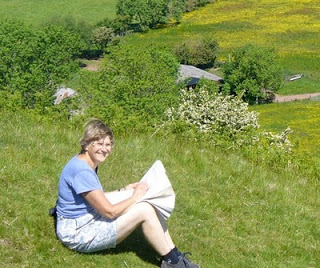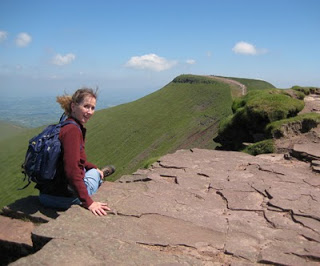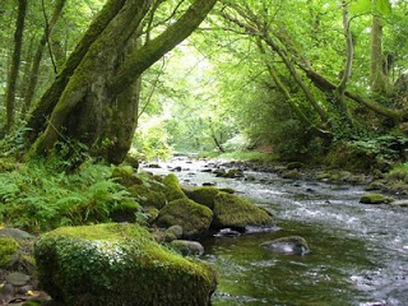 My English friend Liz used to live in a little trailer in the hills of Swaziland and teach at the local African school. She knew all the local birds (or so it seemed to me.) She had an impish grin and was always game to see what was around the next corner or over the next hill. That was twenty-five years ago when we lived in Maputo, Mozambique, and had to go to Swaziland every two or three months just to buy groceries. Walks in the hills with Liz and others saved my sanity in those difficult days. Over the years we stayed in touch. When Steve had meetings this summer in Oxford, England, followed by a retreat in southwest Wales to which spouses were invited, I said, “Why don’t I spend the first week hiking in Wales with Liz?” Liz’s company forced me to hear what would have simply passed for background noise (albeit very pleasant) if I were alone. Her ears sort the calls of chiffchaff, chafinch, song thrush and wren. On valley walks she stopped frequently to pull out her binoculars and search the branches for the source of the call. “Is that a crow or a rook? I didn’t get a close enough look at his face to know.” Warblers, waders and wagtails. “I’d be ecstatic if I just saw a kingfisher now.” A black-headed gull swooped back and forth in front of us while we lunched on the riverbank at Brecon. His gray wings edged with black looked almost blue as he flapped toward us. Liz is a gardener and knows her wildflowers as well. Ragged robin, stonecrop, milkwort and buttercups, common daisies and ox eye daisies are all blooming right now. (The only one I could have identified was a daisy, and I won’t tell you which one.)  In short, my friend Liz was a fascinating companion for a few days in the Brecon Beacons National Park. We climbed Pen y Fan and Corn Du, the highest peaks in south Wales. We looped around the top of the Caerfanell Valley in brilliant sunshine and a frigid wind, then dropped into the valley to dabble our feet in the brook and take pictures of dripping ferns and waterfalls. We wandered along country lanes and riverbanks, and across fields on the network of public footpaths, where ownership of land does not give the right to deny passage where people have traditionally walked. I was pleased to find that Liz and I had a similar sense of pacing—when to stop for tea or lunch and when to ignore the time and enjoy the walk. The trouble with climbing mountains is that they are all up hill. Our old-lady legs decided to skip Cribyn, the awe-inspiring crag just beyond Pen y Fan, even though we may never be back. It certainly would have been easier to summit when we were already on Pen y Fan than to start from the bottom. But one has to draw a line somewhere, and the twisting trails and beguiling views could lure us on from one peak to the next in this land that reminded us both of a greener version of Swaziland. We did a town walk in Brecon at the end of the week with an art gallery, a medieval cathedral, raspberry Pavlova ice cream, and wonderful views of the peaks where we had hiked. Liz paints watercolors—small ones to make greeting cards usually. Our last evening in Llangors she painted me a view of Pen y Fan and Corn Du just right to hang over the fireplace in my dolls house—a memory of a lovely holiday and monument to a long-time friend.
1 Comment
LeAnne
1/7/2015 03:18:58 am
This post has been moved from another site. All comments were lost.
Reply
Leave a Reply. |
AuthorLeAnne Hardy has lived in six countries on four continents. Her books come out of her cross-cultural experiences and her passion to use story to convey spiritual truths in a form that will permeate lives. Add http://www.leannehardy.net/1/feed to your RSS feed.
To receive an e-mail when I post a new blog, please subscribe.
Categories
All
Archives
November 2022
|

 RSS Feed
RSS Feed